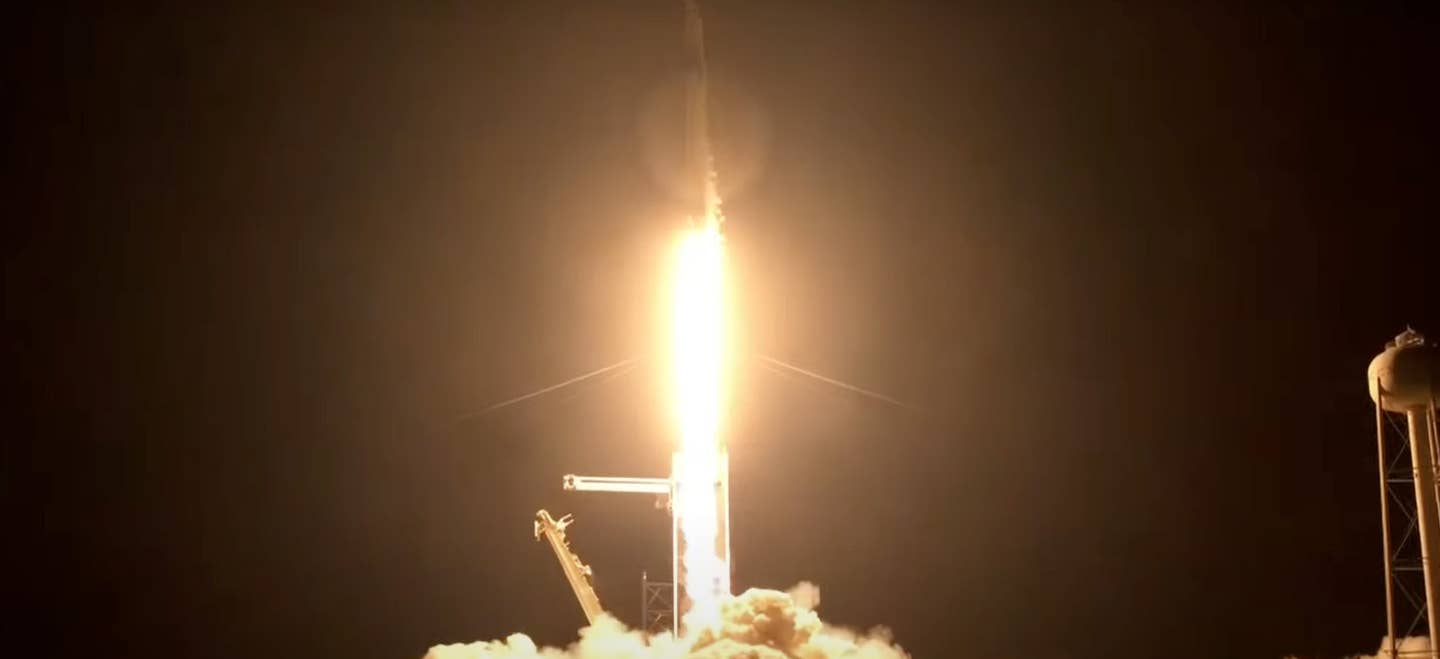
Inspiration4, the world’s first orbital spaceflight fully crewed by civilians, successfully lifted off from Florida’s Kennedy Space Center on Wednesday. Inspiration4
Inspiration4, the world’s first orbital spaceflight fully crewed by civilians, successfully lifted off from Florida’s Kennedy Space Center on Wednesday, beginning what mission officials called a “new era.”
Never before has a journey to orbit been fully composed of civilians who aren’t professional astronauts. In some ways, it brings crewed space travel closer to a future when orbital flights without oversight by NASA or the U.S. military will be commonplace.
Unlike recent flights to the edge of space by entrepreneurs Richard Branson of Virgin Galactic and Blue Origin’s Jeff Bezos, Inspiration4′s mission takes them into orbit—a much greater technological challenge.
Inspiration4 "may represent a new era for human spaceflight and exploration," said a statement on its website.
Plans call for the mission’s Dragon SpaceX capsule to orbit around Earth at 17,000 mph, at an altitude of about 350 miles (575 km). That’s higher than any crewed mission since 2009, when astronauts aboard Space Shuttle Atlantis repaired the orbiting Hubble Space Telescope, according to Inspiration4′s website.
During a pre-launch news conference Tuesday, Mission commander and billionaire CEO Jared Isaacman acknowledged the mission includes a bit of acceptable risk and explained why it’s important that the spacecraft attain such a high altitude.
"If we’re going to go to the moon again and we’re going to go to Mars and beyond, then we need to get a little outside of our comfort zone and take the next step in that direction," Isaacman told reporters.
Isaacman, the mission benefactor, founded Shift4 Payments. He’s also a military and commercially rated jet pilot, certified to fly a dozen aircraft, including the Aermacchi MB-339 and the Aero L-159 Alca.
The launch, using a SpaceX Falcon 9 rocket, took place at NASA’s iconic Launch Complex 39 – the starting point for many historic Apollo and Space Shuttle missions.
Other crewmembers include Hayley Arceneaux, 29, the youngest U.S. citizen to go to space, according to mission officials. During their three-day mission, Arceneaux and colleagues Dr. Sian Proctor and Chris Sembroski plan to conduct experiments and gather scientific data on human performance in zero gravity.
Arceneaux is a physician assistant and childhood bone cancer survivor. Proctor is a geoscientist and professor. Sembroski is a U.S. Air Force veteran and aerospace industry professional.
Mission planners also hope to raise $100 million in donations for Memphis, Tennessee-based St. Jude’s Children’s Research Hospital, where Arceneaux was treated as a child. Isaacman has already pledged $100 million of his own for the hospital.
If all goes as expected, the crew will return to Earth after orbiting for three days, splashing down off the Florida coast.

Sign-up for newsletters & special offers!
Get the latest FLYING stories & special offers delivered directly to your inbox






